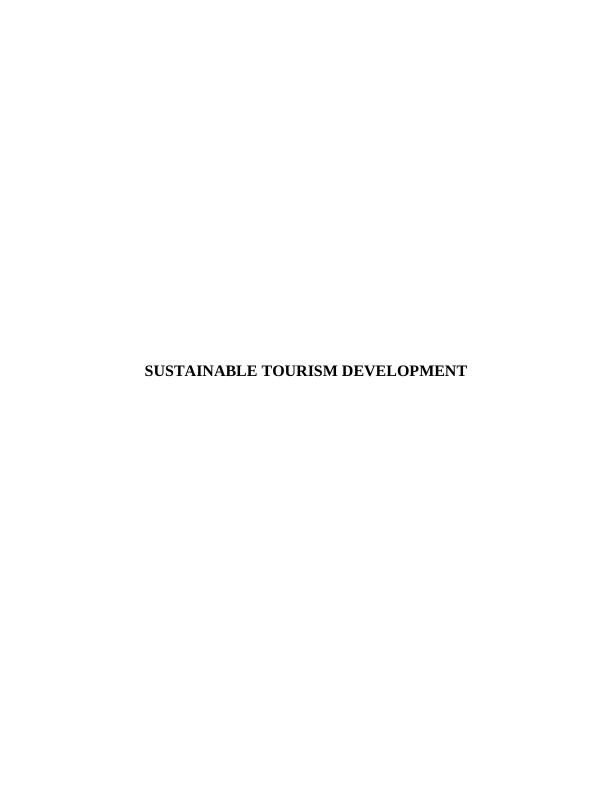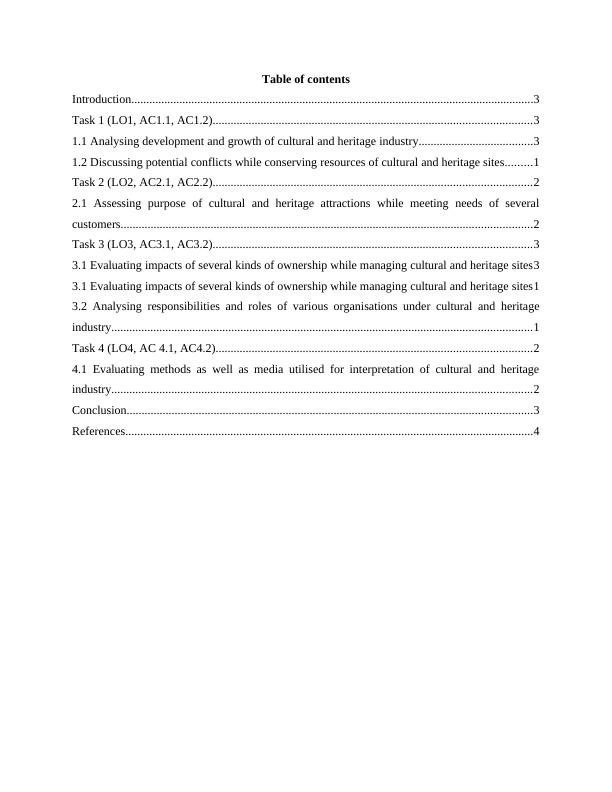Analysis of Cultural and Heritage Industry
14 Pages4995 Words361 Views
Added on 2019-12-28
About This Document
SUSTAINABLE TOURISM DEVELOPMENT Table of contents Introduction 3 Task 1 (LO1, AC1.1, AC1.2) 3 1.1 Analysing development and growth of cultural and heritage industry 3 1.2 Discussing most significant conflicts while conserving resources of cultural and heritage sites 1 Task 2 (LO2, AC2.1, AC2.2) 2 2.1 Assessing purpose of cultural and heritage attractions while meeting needs of several customers 2 Task 3 (LO3, AC3.1, AC3.2) 3 3.1 Evaluating impacts of several kinds
Analysis of Cultural and Heritage Industry
Added on 2019-12-28
ShareRelated Documents
End of preview
Want to access all the pages? Upload your documents or become a member.
Report on Heritage and Cultural Tourism Management (DOC)
|14
|4047
|53
Assignment- Growth & Development In Heritage & Cultural Industry
|17
|4254
|135
Understanding the growth and development of the heritage and cultural tourism industry within travel and tourism
|14
|3674
|53
Development of Heritage and Cultural Industry within Travel and Tourism : Report
|20
|5197
|37
Case Study Human Growth And Development Assignment
|16
|6174
|38
Heritage and Cultural Tourism Management
|15
|3321
|247




